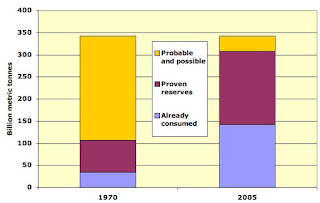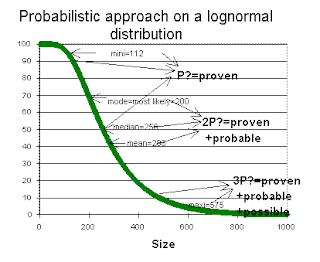Probable reserves are those unproved reserves which analysis of geological and
engineering data suggests are more likely than not to be recoverable. In this context,
when probabilistic methods are used, there should be at least a 50% probability that the
quantities actually recovered will equal or exceed the sum of estimated proved plus
probable reserves.
In general, probable reserves may include (1) reserves anticipated to be proved by normal
step-out drilling where sub-surface control is inadequate to classify these reserves as
proved, (2) reserves in formations that appear to be productive based on well log
characteristics but lack core data or definitive tests and which are not analogous to
producing or proved reservoirs in the area, (3) incremental reserves attributable to infill
drilling that could have been classified as proved if closer statutory spacing had been
approved at the time of the estimate, (4) reserves attributable to improved recovery
methods that have been established by repeated commercially successful applications
when (a) a project or pilot is planned but not in operation and (b) rock, fluid, and
reservoir characteristics appear favorable for commercial application, (5) reserves in an
area of the formation that appears to be separated from the proved area by faulting and
the geologic interpretation indicates the subject area is structurally higher than the proved
area, (6) reserves attributable to a future workover, treatment, re-treatment, change of
equipment, or other mechanical procedures, where such procedure has not been proved
successful in wells which exhibit similar behavior in analogous reservoirs, and (7)
incremental reserves in proved reservoirs where an alternative interpretation of
performance or volumetric data indicates more reserves than can be classified as proved.




No comments:
Post a Comment